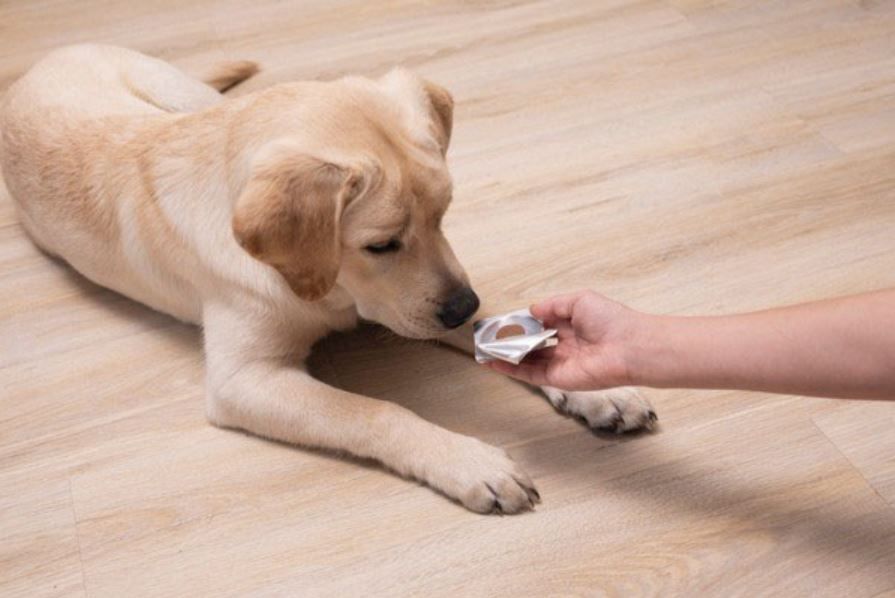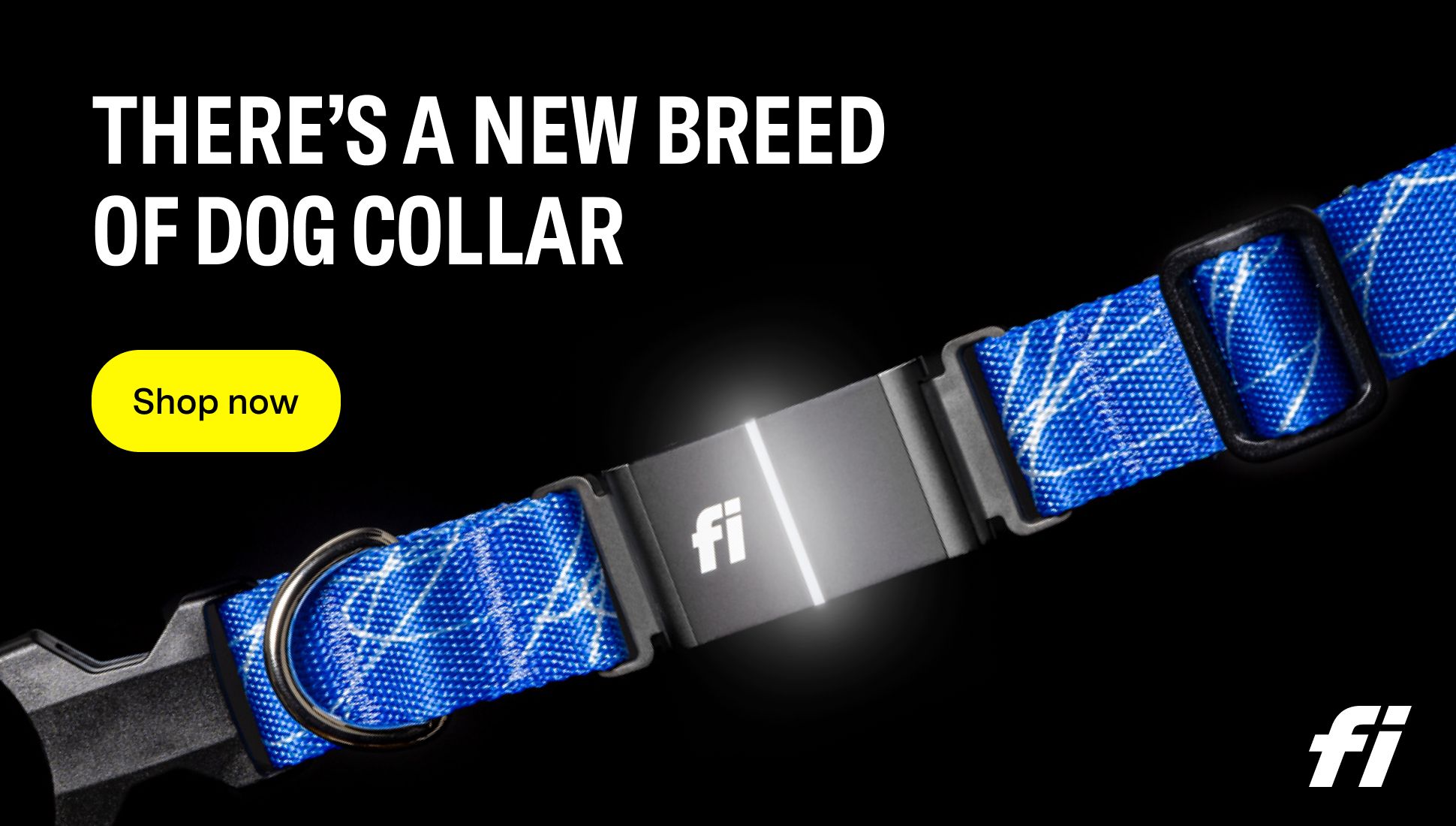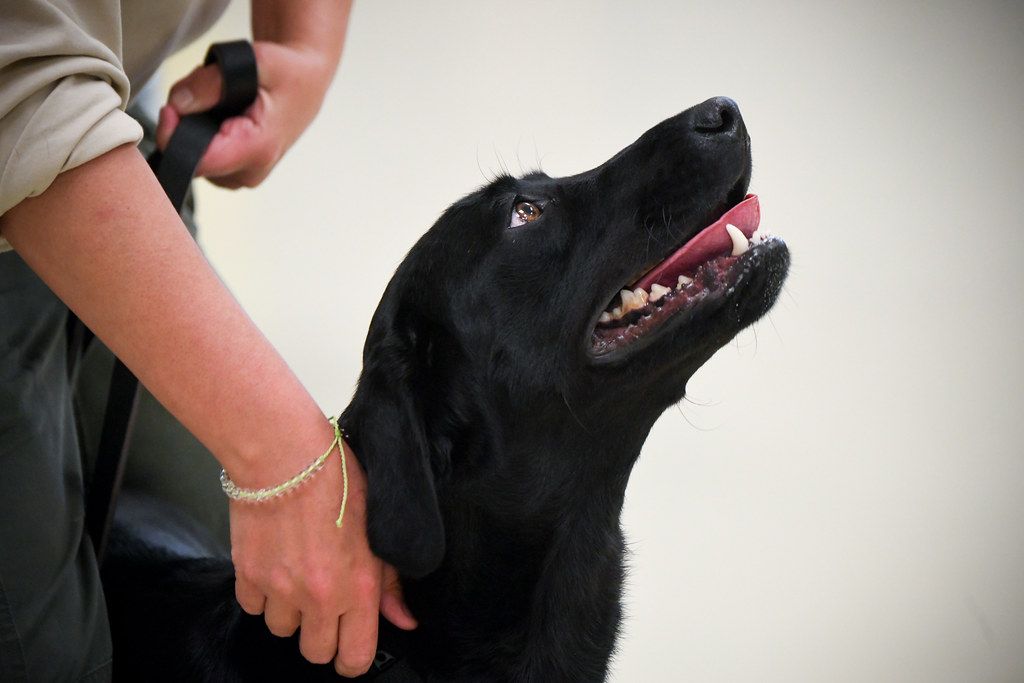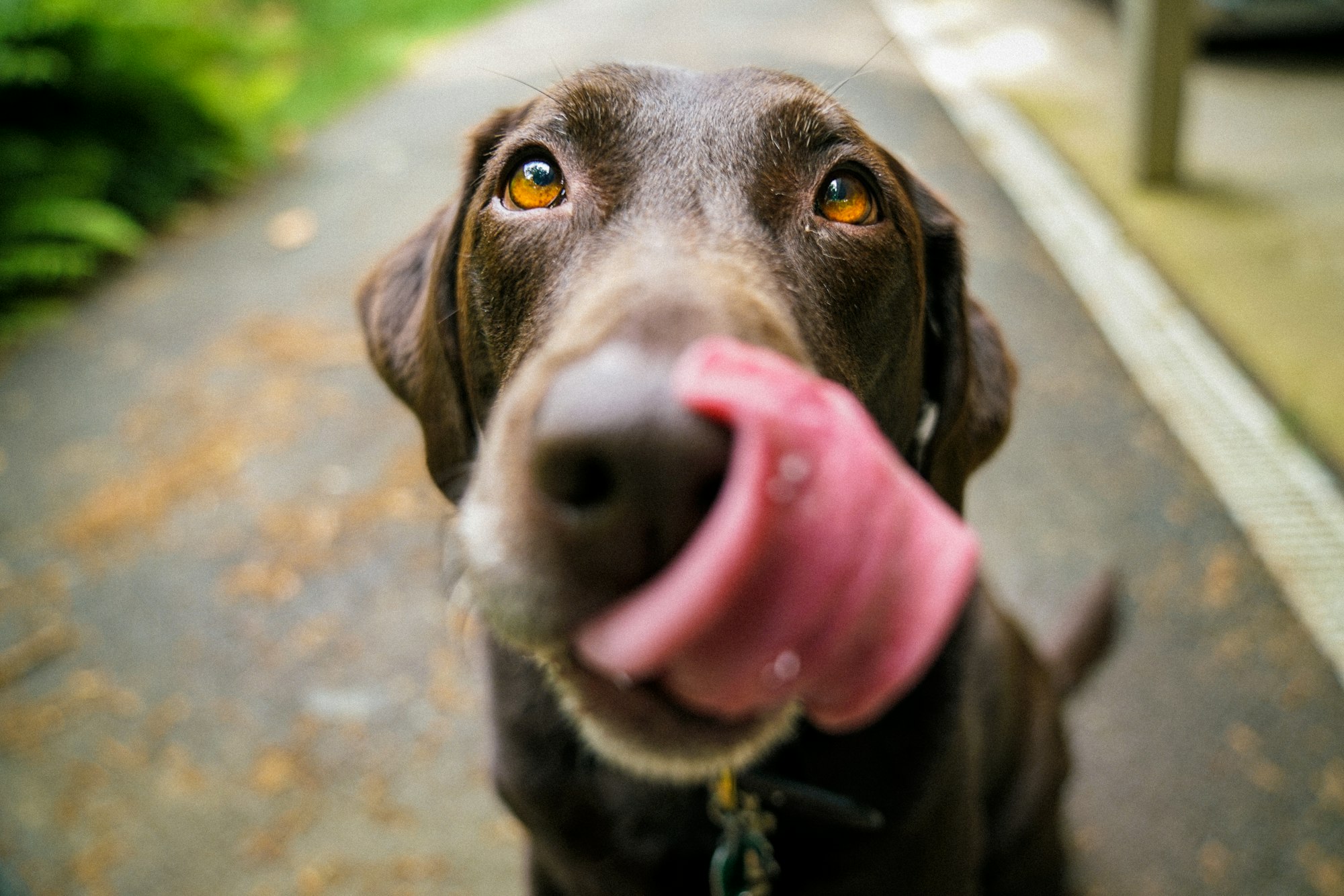Discovering that your dog has ingested a flea collar can be a cause for concern as it poses potential risks to their health. It is important to take immediate action to ensure the well-being of your furry friend. Understanding the dangers associated with a dog ingesting a flea collar is crucial in handling this situation effectively.
Flea collars contain various chemicals designed to repel and kill fleas, ticks, and other pests. These collars typically release small amounts of toxic substances that, if ingested by your dog, can lead to adverse reactions. It is essential to be aware of the potential toxic chemicals in flea collars and how they can affect your dog's health.

Ingesting a flea collar can have detrimental effects on your dog's gastrointestinal system, nervous system, and overall well-being. The severity of symptoms can vary depending on the size of your dog, the amount ingested, and the chemicals present in the collar. Understanding these potential health implications will help you recognize when immediate veterinary care is necessary.
If you find that your dog has eaten a flea collar, there are steps you can take to address the situation promptly and responsibly. Staying calm and assessing the situation is the first step. It is crucial to contact your veterinarian without delay to seek professional guidance. By providing them with specific information, such as the brand of the flea collar and the time of ingestion, you can help them assess the potential risks and determine the best course of action.
Preventing accidental ingestion of flea collars is vital for the safety of your dog. Choose safer alternatives that use natural ingredients, and follow proper usage and storage instructions. Regularly inspect your dog's collar for any signs of wear or damage to avoid any potential dangers. Implementing effective flea control measures in your home can help minimize the need for collars and reduce the risk of accidental ingestion.
By taking proactive measures and knowing what to do if your dog eats a flea collar, you can ensure their safety and well-being. Remember, always consult your veterinarian for professional advice in these situations.
What to Do if Your Dog Ate a Flea Collar?
If your dog happens to eat a flea collar, it is important to take immediate action to ensure their safety and well-being. Here are the steps to follow if your dog ate a flea collar:

- Stay calm and assess the situation. Take note of any symptoms your dog may be experiencing, such as vomiting, diarrhea, or lethargy.
- Remove any remaining flea collar pieces from your dog's mouth. Be cautious to avoid getting bitten or scratched during this process.
- Contact your veterinarian for guidance. They will be able to provide you with specific advice based on your dog's size, breed, and the type of flea collar ingested.
- Follow your veterinarian's instructions. They may recommend monitoring your dog closely at home or bringing them in for an examination. Be sure to take any recommended actions promptly.
- Observe your dog for any changes in behavior or symptoms. Keep a close eye on their appetite, energy levels, and bowel movements. If anything seems abnormal, contact your veterinarian right away.
- Prevent future incidents. Store all flea collars and other potentially harmful items securely, out of your dog's reach. Consider exploring alternative flea control methods that are safer for your pet.
Remember, the health and well-being of your dog should always be a top priority. By following these steps, you can ensure the best possible care for your furry friend if they happen to eat a flea collar back in this format:

Understanding the Dangers of a Dog Ingesting a Flea Collar
Understanding the dangers of a dog ingesting a flea collar is of utmost importance for ensuring the well-being and safety of your cherished pet. Here are some key points to consider:
- The toxicity concerns linked with flea collars: Flea collars are composed of various chemicals, such as organophosphates and pyrethroids, which are formulated to repel or eliminate fleas and ticks. These chemicals can prove to be harmful to dogs if consumed.
- Possible symptoms: In the event that your dog consumes a flea collar, it might exhibit a range of symptoms, including vomiting, diarrhea, excessive drooling, tremors, seizures, and even respiratory distress. It is essential to closely monitor your dog for any signs of toxicity.
- Size and weight of the dog: The severity of the risks can also rely on the size and weight of your dog. Smaller dogs are more susceptible to the adverse effects stemming from the ingestion of chemicals present in flea collars.
- Immediate actions: Should your dog accidentally ingest a flea collar, it is crucial to promptly seek veterinary care. Refrain from inducing vomiting or administering any home remedies without professional guidance, as doing so may exacerbate the situation.
- Treatment options: The veterinarian may employ various methods to mitigate the toxic effects, such as inducing vomiting, administering activated charcoal to absorb the toxins, providing supportive care, and closely monitoring the dog's vital signs.
- Preventive measures: To prevent such incidents, it is important to meticulously select flea control products that are specifically designed for dogs. Keep flea collars and other chemical substances out of your dog's reach to prevent accidental ingestion.
By comprehending these dangers and taking appropriate measures, you can safeguard your dog from potential hazards associated with the ingestion of a flea collar.

What Are the Potential Toxic Chemicals in Flea Collars?
1. Most flea collars contain insecticides such as pyrethroids or organophosphates, which are the potentially toxic chemicals found in flea collars. These chemicals are designed to kill fleas and ticks but can also be harmful to dogs if ingested.
2. Pyrethroids, one of the potential toxic chemicals, are synthetic chemicals that imitate the properties of natural pyrethrins, derived from chrysanthemum flowers. They function by attacking the nervous system of insects and can also affect dogs if they chew or ingest the collar.
3. Organophosphates, another potentially toxic chemical, are commonly used in flea collars as insecticides. They work by inhibiting the activity of enzymes in the nervous system of insects. If a dog ingests an organophosphate flea collar, it can lead to symptoms such as drooling, vomiting, tremors, or even seizures.
4. Some flea collars may also contain additional chemicals like propoxur or carbamates, which can be toxic to dogs if ingested in large quantities.
5. It's important to note that the specific chemicals and concentrations can vary among flea collars. Reading the product label and consulting with your veterinarian can help you understand the particular chemicals present in the flea collar you're using.
Being aware of the potentially toxic chemicals in flea collars is crucial for the safety and well-being of your dog. If your dog ingests a flea collar or exhibits any symptoms of poisoning, it's essential to seek immediate veterinary attention.
How Can Ingesting a Flea Collar Affect Your Dog's Health?
When a dog ingests a flea collar, it can have negative effects on their health. Flea collars often contain toxic chemicals, such as organophosphates or pyrethroids, which are designed to kill fleas and ticks. However, when ingested in large amounts, these chemicals can be harmful to dogs.
The ingestion of a flea collar can lead to gastrointestinal problems in dogs, causing symptoms like vomiting, diarrhea, or stomach pain. The severity of these symptoms depends on the amount of the collar ingested and the size of the dog.
In addition to gastrointestinal issues, some dogs may also experience neurological symptoms after consuming a flea collar. These symptoms may include tremors, seizures, or difficulty walking, especially if the dog has ingested a large amount of the toxic chemicals. Furthermore, in rare cases, dogs can have allergic reactions to the chemicals in the collar, resulting in swelling, itching, or difficulty breathing. If any of these allergic symptoms are observed, immediate veterinary attention is crucial.
It is essential to be aware of the potential dangers associated with a dog ingesting a flea collar and to take prompt action if it happens. Contact your veterinarian immediately for guidance in such a situation. The vet will provide specific instructions based on factors like the size of the dog, the amount ingested, and any observed symptoms. Remember, early intervention can significantly improve the dog's chances of a full recovery.
To prevent accidental ingestion of flea collars, it is important to take preventative measures. Ingesting a flea collar can be extremely dangerous for dogs; thus, it is recommended to keep them out of reach. By being proactive and taking necessary precautions, you can ensure the safety and well-being of your canine companion.

Steps to Take if Your Dog Ate a Flea Collar
Discover what to do if your furry companion devours a flea collar! From staying calm and assessing the situation to contacting your veterinarian immediately, this section provides essential steps to take. Learn how to effectively communicate with your vet and ensure you follow their expert guidance. Keep your pup's safety in mind as we explore the necessary actions to address this potential concern. Stay informed and be prepared for any unexpected encounters with your dog and flea collars.
Stay Calm and Assess the Situation
When faced with a situation where your dog has ingested a flea collar, it is crucial to stay calm and assess the situation. Panicking or getting anxious may not only make the situation more stressful for you but also for your dog. Take a moment to breathe and evaluate the severity of the situation.
First, check if your dog is showing any immediate signs of distress or discomfort. Look for symptoms such as vomiting, diarrhea, excessive drooling, difficulty breathing, or any unusual behavior. Assessing your dog's condition will help you determine the urgency of the situation.
Next, safely remove any remaining parts of the flea collar from your dog's mouth to prevent further ingestion. Be careful while doing so to avoid getting bitten or accidentally hurting your dog.
Once you have assessed the situation and removed the flea collar, it is crucial to stay calm and assess the situation. Contact your veterinarian immediately and inform them about the incident. Provide them with any relevant information regarding the brand and type of flea collar ingested. Your veterinarian will be able to guide you on the appropriate steps to take and may ask you to bring your dog in for an examination.
Remember, each situation may vary, and it is essential to follow your veterinarian's instructions without delay. Staying calm and assessing the situation will help you make the best decisions for your dog's health. Your veterinarian will provide you with the best guidance based on your dog's health condition and the potential toxicity of the flea collar.
Fact: According to the Pet Poison Helpline, flea collars can contain various toxic chemicals such as imidacloprid, pyrethroids, or organophosphates, which can be harmful to dogs if ingested in large quantities. Stay calm and assess the situation to ensure the safety of your furry friend.
Contact Your Veterinarian Immediately
If your dog ingests a flea collar, it is vital to contact your veterinarian immediately. Time is of the essence because certain chemicals in flea collars can be toxic to dogs and may cause severe health issues.
When you reach out to your veterinarian, make sure to provide them with all the necessary information about the incident. Be ready to give details about the type of flea collar ingested, the time of ingestion, and any current symptoms your dog may have.
It is imperative to follow your veterinarian's instructions for the well-being of your dog. They may suggest inducing vomiting or recommend bringing your dog to the clinic for a thorough examination. It is crucial to heed their guidance as they are trained professionals who can determine the best course of action for your dog's specific situation.
Always remember that contacting your veterinarian immediately can help prevent any potential complications or adverse effects caused by the ingestion of a flea collar. Time is of the essence, so do not hesitate to seek professional assistance as soon as possible.
Fact: Ingesting toxic chemicals from flea collars can lead to symptoms such as nausea, vomiting, diarrhea, tremors, and seizures in dogs. Contacting your veterinarian immediately is crucial to prevent further harm.
Provide Information to the Veterinarian
When your dog has ingested a flea collar, it is crucial to naturally provide accurate and detailed information to your veterinarian. Here are the necessary steps to follow:
1. Inform your veterinarian about the situation promptly. Timely communication is essential in ensuring proper treatment for your dog.
2. Clearly describe the flea collar that your dog has ingested. Provide information such as the brand, type of collar, and any active ingredients mentioned on the packaging. This will help the veterinarian assess the potential toxicity and formulate the most appropriate course of action.
3. Specify the quantity of the collar your dog has consumed. If possible, provide an estimate of the size or weight of the collar to give the veterinarian a better understanding of the potential exposure.
4. Share the time frame of the ingestion. Let the veterinarian know when you discover that your dog has eaten the flea collar. This information can help determine the urgency of treatment and potential complications.
5. Mention any symptoms or changes in your dog's behavior. If you have observed any abnormal signs, such as vomiting, diarrhea, lethargy, or difficulty breathing, communicate these to your veterinarian. This information will aid in assessing the severity of the situation and guiding appropriate treatment options.
Remember, naturally providing accurate and detailed information to your veterinarian is crucial for the well-being and prompt treatment of your dog after ingesting a flea collar.
Follow the Vet's Instructions
When your dog has ingested a flea collar, it is crucial to follow the vet's instructions to ensure their safety and well-being. Here are the steps to follow:
- Stay calm and assess the situation. It is important not to panic and approach the situation calmly.
- Contact your veterinarian immediately. Inform them about the situation and follow their guidance.
- Provide information to the veterinarian. Be prepared to give them details regarding the brand and type of flea collar ingested.
- Follow the vet's instructions. Your veterinarian will provide specific instructions based on the size of your dog, the type of flea collar ingested, and any potential symptoms your dog may be experiencing.
It is important to adhere to the vet's instructions to ensure the appropriate treatment and care for your dog. Following these steps will help minimize any potential harm or complications caused by the ingestion of a flea collar.
Remember, it is always best to consult a professional veterinarian when your dog has ingested a foreign object or potentially harmful substance. They are equipped with the knowledge and expertise to provide the appropriate care for your furry friend.

Tips for Preventing Accidental Ingestion of Flea Collars
Preventing accidental ingestion of flea collars is crucial for the well-being of our furry friends. In this section, we'll explore practical tips to keep your dogs safe. Discover safer alternatives, learn how to properly use and store flea collars, regularly inspect your dog's collar, and implement effective flea control measures in your home. By following these guidelines, you can ensure your dog's safety and minimize the risks associated with flea collar ingestion.
Choose Safer Alternatives
When it comes to protecting your dog from fleas, it is important to choose safer alternatives to flea collars. Here are some options to consider:
- Natural flea repellents: Look for natural products that are made with ingredients like essential oils such as lavender, peppermint, or cedarwood. These can help repel fleas without the use of harsh chemicals.
- Flea shampoos: Use flea shampoos that are specifically designed to kill and repel fleas. Choose safer alternatives by looking for products that contain natural ingredients like neem oil or pyrethrin.
- Flea combs: Regularly comb your dog's fur with a flea comb. This can help remove any fleas or flea eggs present on your dog's coat.
- Oral flea prevention: Speak to your veterinarian about oral flea prevention medications. These medications are taken orally and can be a safer alternative to prevent fleas from infecting your dog.
- Topical treatments: Consider using topical treatments that are applied to your dog's skin. These treatments can help kill and repel fleas, providing long-lasting protection. Choose safer alternatives for topical treatments.
Remember, it's important to follow the instructions provided by the manufacturer and consult with your veterinarian before using any flea prevention products. Regularly check your dog's coat for any signs of fleas and take immediate action if you notice any infestation. By choosing safer alternatives, you can effectively protect your dog from fleas without compromising their health and well-being.
Properly Use and Store Flea Collars
Properly using and storing flea collars is essential to ensure the safety and effectiveness of these products for your dog. Here are some important guidelines to follow:
1. Read and follow the instructions: Before using a flea collar, it is crucial to carefully read the instructions provided by the manufacturer. Follow the recommended usage guidelines and any specific instructions for your dog's size or breed.
2. Fit the collar correctly: It is important to properly fit the flea collar snugly around your dog's neck, while still allowing room for two fingers to fit between the collar and the dog's skin. This ensures that the collar is neither too loose nor too tight, preventing any discomfort or the collar from getting caught.
3. Check for any allergic reactions: After putting on the flea collar, closely monitor your dog for any signs of an allergic reaction, such as irritation, itching, or redness. If any adverse reactions occur, promptly remove the collar and consult your veterinarian.
4. Store the collar safely: When storing flea collars, always keep them in a cool and dry place, away from direct sunlight. It is important to avoid exposing the collar to extreme temperatures, as this can impact its effectiveness in controlling fleas.
5. Keep out of reach from children and other pets: Flea collars contain chemicals designed to kill and repel fleas. To prevent accidental ingestion or contact with these chemicals, store the collar in a secure location that is inaccessible to children and other animals.
By following these guidelines for properly using and storing flea collars, you can promote the safety and well-being of your dog. Remember, your veterinarian is always the best resource for guidance and advice on flea control and the proper use of flea collars.

Regularly Inspect Your Dog's Collar
Regularly inspecting your dog's collar is crucial for ensuring their safety and well-being. Here are some steps to follow when regularly inspecting your dog's collar:
- Begin by carefully examining the collar to check for any indications of wear and tear. Look for frayed edges, loose stitching, or any other damage that could compromise the integrity of the collar.
- Ensure that the buckle and fastening mechanisms are secure and functioning correctly. It is important to adjust the collar properly, ensuring it is neither too tight nor too loose around your dog's neck.
- Pay attention to any signs of irritation or redness around your dog's neck. Look for rashes, swelling, or hair loss that might result from an ill-fitting or irritating collar.
- Take note of any unusual odors emanating from the collar. A foul smell could indicate a buildup of bacteria or fungi that may be harmful to your dog's skin.
- Check for signs of pests like fleas or ticks on your dog's collar. These parasites can attach themselves to the collar and cause discomfort or transmit diseases to your dog.
- Ensure that the identification tags on the collar are securely attached. These tags should include your dog's name, your contact information, and any essential medical details such as allergies or chronic conditions.
- Clean the collar regularly to eliminate dirt, debris, and potential allergens. Follow the manufacturer's instructions for proper cleaning and maintenance.
Regularly inspecting your dog's collar is vital to their safety and comfort. By following these steps, you can identify and address any issues before they become a cause for concern. Remember, your dog's collar should provide security, not pose a potential hazard.
Effective Flea Control Measures in Your Home
- Regularly clean and vacuum your home to eliminate flea eggs and larvae in the environment.
- Wash your pet's bedding and toys frequently to prevent flea infestations.
- Use a quality flea spray or powder specifically designed for home use to treat carpets, furniture, and other areas where fleas may hide.
- Keep your yard well-maintained by regularly mowing the grass and removing any debris or clutter where fleas can thrive.
- Consider using nematodes, which are natural predators of fleas, in your yard to help control the flea population.
- Install flea traps, which use light and warmth to attract and capture fleas, in areas where you suspect flea activity.
- Use flea prevention methods for your pets, such as topical treatments or flea collars, as recommended by your veterinarian.
- Consider using natural remedies, such as essential oils or herbal sprays, to repel fleas from your home and pets.
- If you have a severe flea infestation, it may be necessary to consult a professional pest control service for effective treatment.
Growing up, my family had several dogs, and fleas were a common problem. My mom always made sure to keep our home clean and vacuumed regularly to prevent flea infestations. She would also wash our dogs' bedding and toys frequently and use flea prevention methods recommended by our veterinarian. She would treat our yard with nematodes to control the flea population.
These effective flea control measures in our home helped us keep our dogs and our living environment free from fleas. By implementing these strategies, we were able to enjoy a flea-free home and provide a safe and comfortable environment for our furry friends.
Frequently Asked Questions
What should I do if my dog ate a flea collar?
If your dog has ingested a flea collar, it is important to take immediate action. Contact a vet or Pet Poison Helpline right away for guidance and assistance. Remove the collar if it is still on your dog, and do not induce vomiting without consulting a professional.
What are the symptoms of flea collar poisoning in dogs?
Flea collar poisoning in dogs can lead to a variety of symptoms. These may include depression, diarrhea, vomiting, weakness, inability to control body movements, high or low body temperature, low blood pressure, constipation, urinary incontinence, dilation of the pupils, gastric dilation, excessive drooling, loss of appetite, and seizures.
How is flea collar poisoning in dogs treated?
The treatment for flea collar poisoning in dogs may involve inducing vomiting, using activated charcoal to bind the poison in the intestines, IV therapy, and potentially surgical removal of the collar if it is still in the dog's system. It is crucial to seek veterinary assistance for proper diagnosis and treatment.
Can dogs recover from flea collar poisoning?
Most dogs can fully recover from flea collar poisoning with prompt and appropriate treatment. However, the recovery time may vary depending on factors such as the amount of poison ingested and the dog's age and overall health. It is essential to consult a veterinarian for guidance and follow-up care.
Are flea collars safe for dogs?
Flea collars can be safe for dogs when used properly and according to the manufacturer's instructions. However, they can be toxic if ingested or applied incorrectly. It's crucial to consider the size of the dog, the toxicity level of the collar, and other factors. Consult with a veterinarian about alternative flea control options if you have concerns about the safety of flea collars.
Where can I find veterinary advice or assistance?
If you have concerns about your dog's health or suspect they may have ingested something toxic, it is recommended to contact a licensed veterinarian or seek immediate veterinary treatment. You can consult with a vet online through verified veterinarian platforms or reach out to local veterinary clinics for guidance and assistance.






